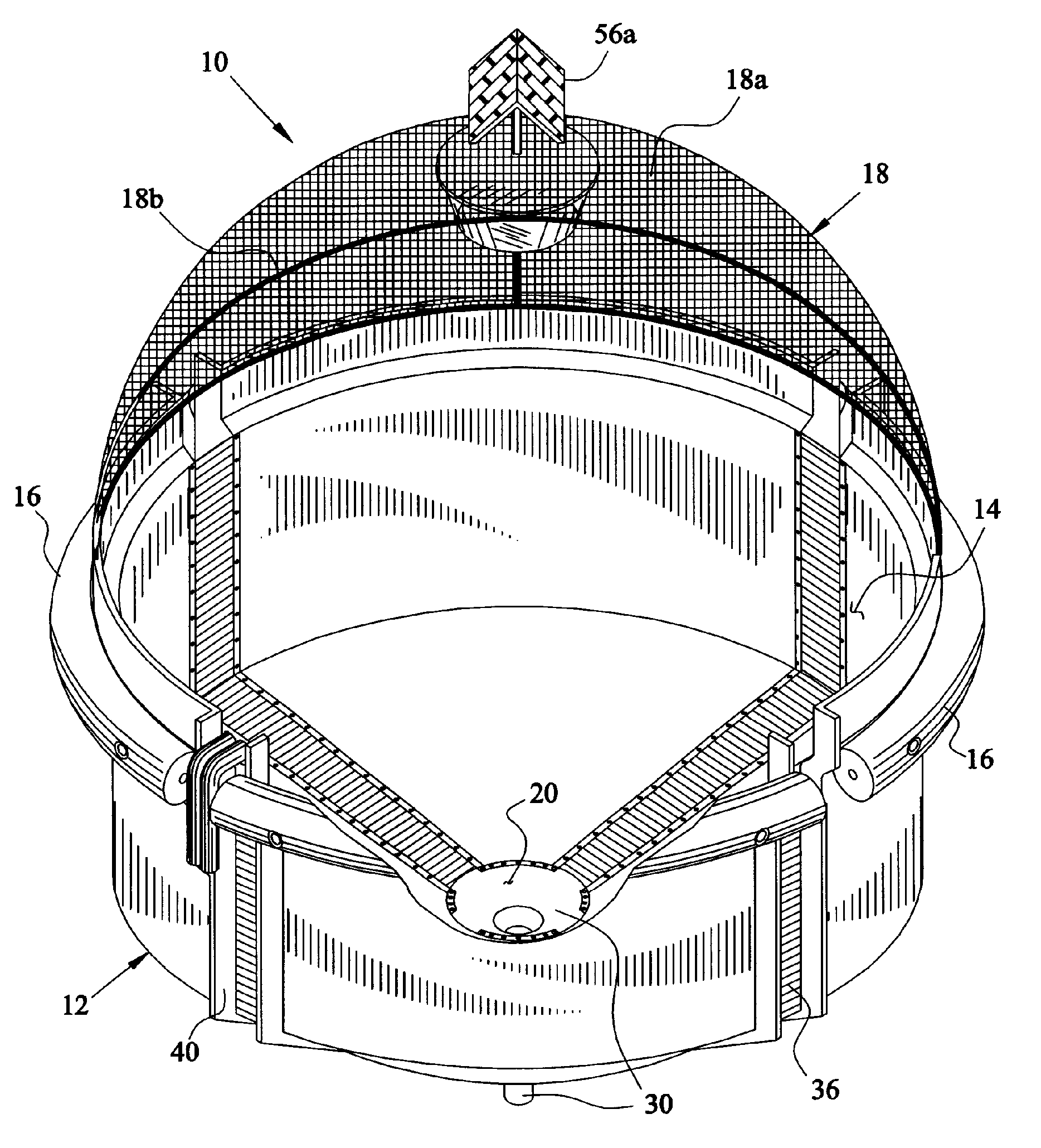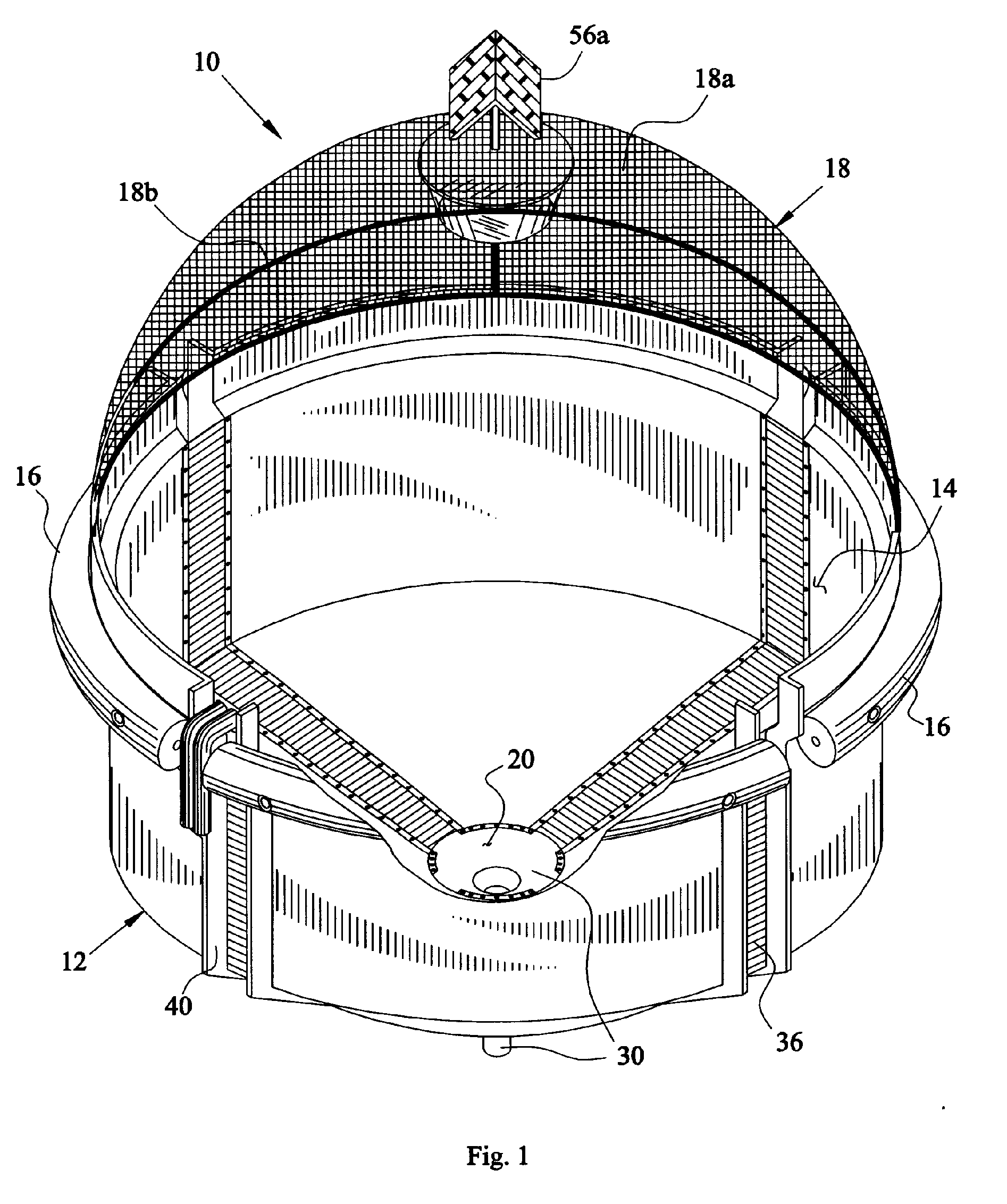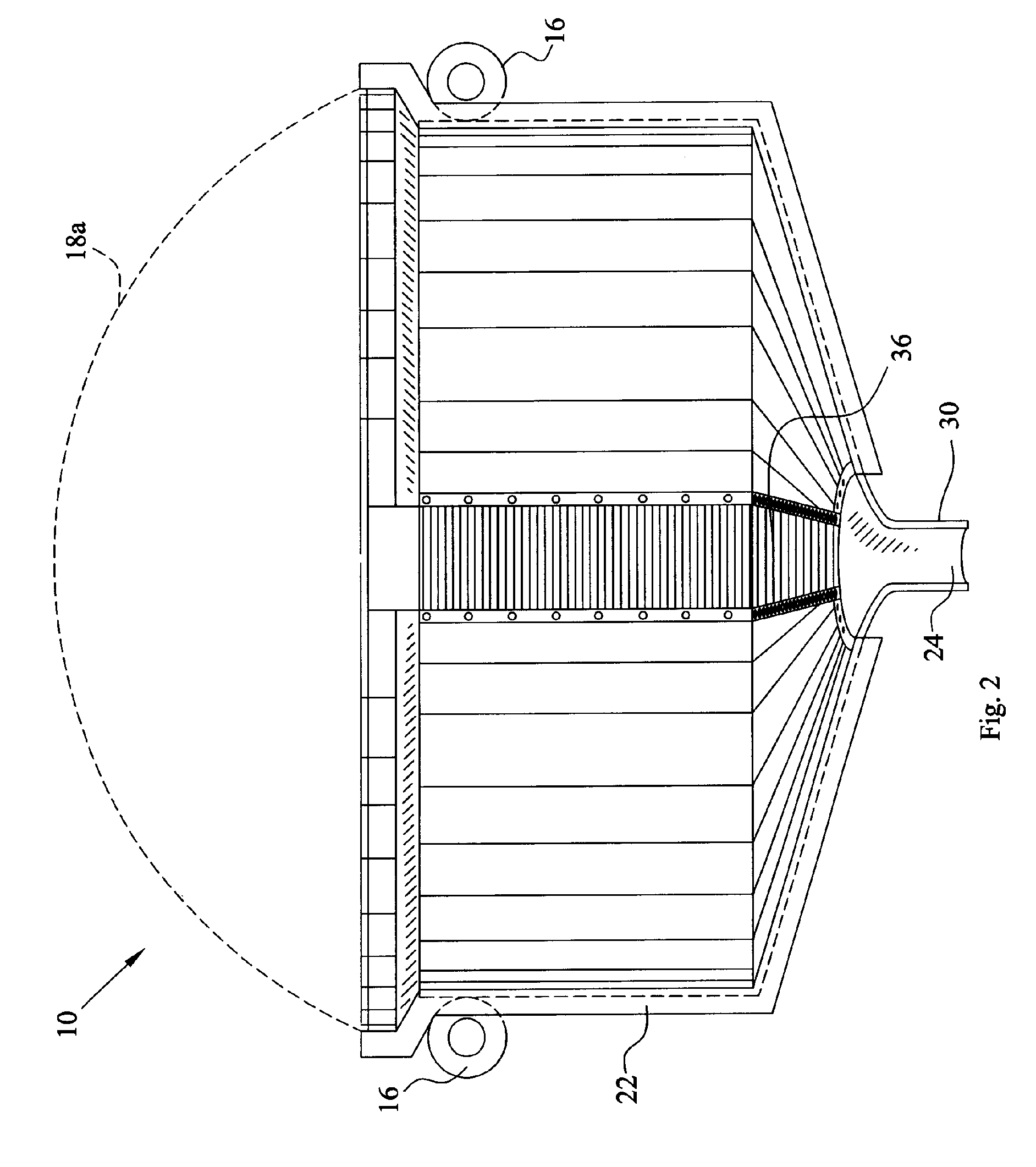Aquatic habitat and ecological tank
a technology for ecological tanks and aquariums, applied in the field of fish containment housings, can solve the problems of prior art, failing alone or in combination with other references, failing to teach or suggest applicants, and prior art not showing or illustrating many
- Summary
- Abstract
- Description
- Claims
- Application Information
AI Technical Summary
Benefits of technology
Problems solved by technology
Method used
Image
Examples
Embodiment Construction
[0039]FIG. 1 illustrates a self-contained, submersible aquaculture tank 10 for containing fish, shellfish, and other aquatic food and ornamental species. The aquaculture tank 10 comprises a cylindrical tank enclosure 12 with a circular open end 14, a flotation device 16 connected to said tank enclosure 12, and a tank cover 18 engaged with said tank enclosure 12. The aquaculture tank may also include an anchoring system (not shown in the drawings) for securing said aquaculture tank 10 in a stationary position within a body of water. As shown in FIGS. 4A and 4B, the tank enclosure 12 is comprised of two or more, but preferably with four to eight, curved panels 22. Each panel 22 includes a convex outer surface 22a, a concave inner surface 22b, a bottom end 22c, and an upper lip 22d to which said flotation device 16 and the tank cover 18 are attached. FIG. 2 shows a cross-sectional view of the aquaculture tank 10 with the flotation device 16 and the tank cover 18 connected to the upper ...
PUM
 Login to View More
Login to View More Abstract
Description
Claims
Application Information
 Login to View More
Login to View More - R&D
- Intellectual Property
- Life Sciences
- Materials
- Tech Scout
- Unparalleled Data Quality
- Higher Quality Content
- 60% Fewer Hallucinations
Browse by: Latest US Patents, China's latest patents, Technical Efficacy Thesaurus, Application Domain, Technology Topic, Popular Technical Reports.
© 2025 PatSnap. All rights reserved.Legal|Privacy policy|Modern Slavery Act Transparency Statement|Sitemap|About US| Contact US: help@patsnap.com



